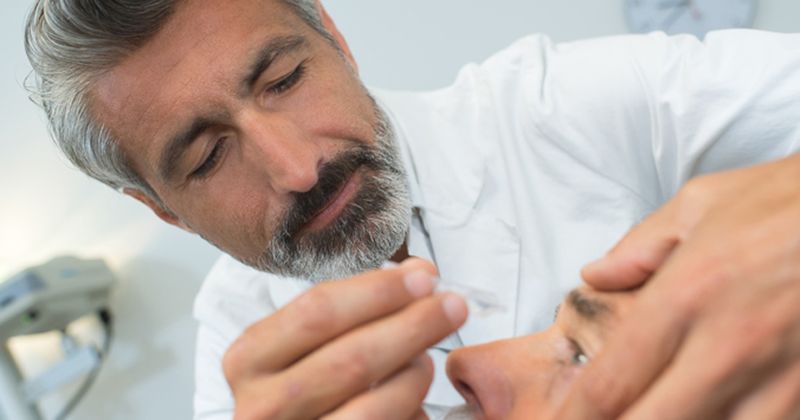First year of prescribing yields tips, insights on Vuity
Vuity has been available for more than a year, in which time we have learned a lot about this modality for treating presbyopia and honed our methods for selecting, screening and educating patients.
Here are three ways my approach has evolved.

Source: Adobe Stock
1. Easy candidates and a few surprises
Vuity (pilocarpine hydrochloride ophthalmic solution 1.25%, Allergan) is indicated for any presbyopic patient who has no disqualifying anatomical problems. It works exceptionally well for latent hyperopes in their late 30s and 40s who are just starting to wear readers, making this group a good place to start using Vuity. I have also learned to recommend it to all good candidates, regardless of age. Each presbyopic candidate views success differently.

Because I am a cataract and refractive surgeon, I have a lot of pseudophakic and post-refractive patients, and many are Vuity candidates. For example, some of my patients using Vuity had LASIK 15 years ago and are now developing presbyopia, have smaller optical zones after 1990s refractive surgery, have dysphotopsia from multifocal IOLs, or experience near vision problems with extended depth of focus IOLs. Vuity can answer some or all of their visual complaints. I never sell it as an answer to all of their near issues, but I say it may help them.
2. Changes to the workup
The recommended workup for Vuity has changed slightly over the first year. Allergan added increased risk for retinal traction, tears and detachment to the warnings and precautions. This prompted the American Society of Cataract and Refractive Surgery to release a consensus statement recommending we perform a complete eye exam to include a dilated fundus exam before prescribing Vuity and consider other tests, such as OCT, on an individual basis. On that exam, if I see patients with retinal issues such as a small hole, lattice degeneration, high myopia or previous retinal surgery, I refer them to a retinal colleague to make sure no anatomical issues preclude using pilocarpine.

Source: Karl G. Stonecipher, MD
One year ago, I only treated presbyopia ancillary to an existing surgical appointment. Now we have a presbyopic screening exam for new patients, with fee-for-service billing. The exam resembles a refractive workup, with OCT, optic nerve imaging and iCare Eidon widefield imaging of the retina, which, in addition to indirect ophthalmoscopy, helps pick up small holes or tears that would rule out pilocarpine.
3. Starting patients off right
It takes time for patients to know if Vuity works for them, so rather than use samples, I prescribe the drops and have patients commit to a short trial period. I tell them, “To determine if this works for you, I want you to use one drop every day for at least 7 days, preferably 14 days. It may sting a bit when you first put it in — that’s fine. And about one in 10 of my patients gets a headache for the first couple of days and may need to take a headache remedy for the first 2 days.”
With this preparation, eight to nine out of 10 of my patients keep using Vuity after the trial period. They can start using drops twice a day if needed, and we discuss that option at the initial visit.
Case example: We all like flexibility
Vuity offers a broad range of candidates, making it flexible from a doctor’s perspective. In the patient’s view, the flexibility to use Vuity only when they need or want it is a popular feature. Here is an example.
A 40-year-old female patient who had LASIK at age 25 years lost the ability to read comfortably at her computer and on her phone. Her uncorrected near vision was 20/50 in both eyes. Her presbyopia workup showed no anatomical reason to rule out pilocarpine. I prescribed Vuity and saw the patient back after 2 weeks. As a previous LASIK patient, she loved seeing without glasses again. With time, she ended up using Vuity only part time. She was happy to use readers working from home, only opting to use Vuity on high-level Zoom calls. She used Vuity to work at the office, as well as to go out on weekends. I have learned that this kind of pattern is common with Vuity — patients quickly find the best fit for their lifestyles.
- Reference:
- ASCRS consensus statement on Vuity | ASCRS task force. https://ascrsvirtualmeeting.ascrs.org/home/clinical-education/clinical-reports/2022-ascrs-consensus-statement-on-vuity. Published October 2022. Accessed Dec. 13, 2022.
- For more information:
- Karl G. Stonecipher, MD, of Laser Defined Vision, can be reached at stonenc@gmail.com.
